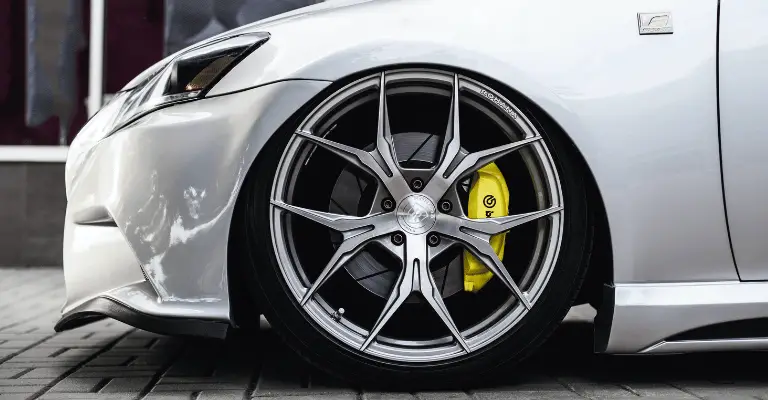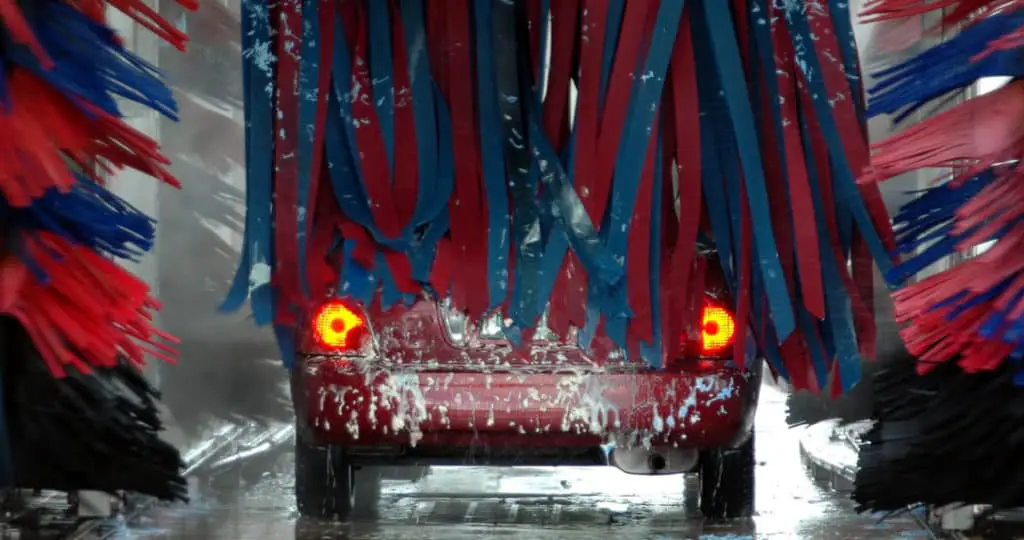- How to Clean Car Carpets Quickly (Without An Extractor) - July 10, 2024
- Can You Touch Up Clear Coat On A Car? Yes and No (Here’s Why) - November 25, 2023
- How To Wax A Car By Hand (For Beginners) - November 14, 2023
Last Updated on January 1, 2025 by Nate Schnell
For car enthusiasts and everyday drivers alike, maintaining a pristine paint job is more than just a matter of aesthetics—it’s a sign of care and attention that helps preserve your vehicle’s value and longevity. But how do you defend your car’s exterior against environmental damage, scratches, and the wear and tear of daily driving?
This guide will walk you through everything you need to know about protecting your car’s paint, from choosing the best products to adopting proper maintenance techniques. Whether you’re a detailing pro or just getting started, these strategies will ensure your vehicle looks its best for years to come.
Why Protect Your Car’s Paint?
The paint on your car isn’t just about looks—it’s a protective layer for the metal underneath. Over time, exposure to harsh weather, UV rays, dirt, and road debris can degrade the paint, leading to issues like fading, chipping, and rust. By taking steps to protect the paint, you can prevent costly repairs, maintain resale value, and enjoy a car that always looks its best.
Types of Paint Protection
Protecting your car’s paint can be broken down into two main approaches: using specialized products and following practical care practices. Each method offers its own advantages and can be combined for optimal results.
Paint Protection Products
Paint protection products are designed to add a barrier between your car’s paint and the environment. Here are the most popular types:
1. Clear Coat Protectant Car Wash
These products, often applied during or after a car wash, form a thin protective layer over your car’s clear coat. They’re ideal for maintaining a polished appearance and guarding against minor scratches, dust, and dirt. Clear coat protectants are a simple, low-maintenance solution for routine care.
2. Wax-Based Products
Wax has long been a favorite among car enthusiasts for its ability to enhance shine and provide short-term protection. Available as spray wax, liquid wax, or paste wax, these products are easy to apply and offer a rich, glossy finish. While traditional waxes require more frequent application, they remain a go-to choice for maintaining a showroom shine.
- Spray Wax: Ideal for quick touch-ups, spray wax is easy to use and great for removing water spots or fingerprints.
- Liquid Wax: Provides longer-lasting results and is easier to apply compared to paste wax. It’s an excellent option for clear-coat finishes.
3. Film-Based Protection
Film-based options like paint protection film (PPF) and vinyl wraps offer a durable, physical barrier against damage.
- Paint Protection Film: A clear thermoplastic urethane layer applied to high-impact areas, such as the hood, bumpers, and side mirrors, to guard against chips and abrasions.
- Vinyl Wraps: These customizable films protect your paint while allowing you to change your car’s color or finish. They’re removable and versatile.
4. Coating-Based Products
Advanced coatings like ceramic and graphene offer long-lasting protection and enhanced durability.
- Ceramic Coatings: These nano-coatings bond to the surface of your car, creating a hydrophobic barrier that repels water, dirt, and contaminants. Ceramic coatings can last two to five years and deliver a deep, glossy finish.
- Graphene Coatings: A newer technology, graphene coatings provide even greater durability and heat resistance while enhancing your car’s shine.
Practical Tips for Paint Protection
In addition to using protective products, adopting good habits can help maintain your car’s finish.
1. Park in Covered or Shaded Areas
Whenever possible, park in a garage, carport, or under a cover to shield your car from direct sunlight and harsh weather. UV rays can cause fading, while rain and snow can lead to water spots and corrosion.
2. Address Imperfections Immediately
Bird droppings, tree sap, and water spots can damage your paint if left untreated. Clean these off as soon as possible using a gentle car-safe cleaner.
3. Wash Your Car Properly
Regular washing removes dirt and debris that can scratch or dull your paint. Use a pH-balanced car wash soap and a microfiber wash mitt to clean your car without causing damage. Rinse thoroughly and dry with a microfiber towel to prevent water spots.
4. Use a Clay Bar for Deep Cleaning
A clay bar can remove embedded contaminants like tar, brake dust, and tree sap, leaving your paint smooth and ready for waxing or coating. Use a clay lubricant to prevent scratching during the process.
5. Wax or Coat Regularly
Applying a wax or ceramic coating every few months provides an extra layer of protection. Follow the product’s instructions for best results and reapply as needed to maintain coverage.
6. Avoid Harsh Cleaning Tools
Never use abrasive sponges or brushes on your car’s paint. Stick to soft microfiber towels and wash mitts designed for automotive use.
Key Products for Paint Protection
Best for Routine Maintenance: Clear coat protectants, such as quick detailer sprays, are perfect for maintaining your car’s shine between washes.
Best for Long-Term Protection: Ceramic and graphene coatings offer superior durability and hydrophobic properties.
Best for High-Impact Areas: Paint protection film is ideal for areas prone to chips and scratches.
Best for Quick Shine: Spray waxes provide instant results and are perfect for touch-ups.
Wrapping Up
Protecting your car’s paint doesn’t have to be a daunting task. By using the right products and following practical care tips, you can keep your vehicle looking like new while safeguarding it from damage. Whether you choose the simplicity of a clear coat protectant or the advanced durability of a ceramic coating, regular maintenance and thoughtful care will ensure your car shines for years to come.



